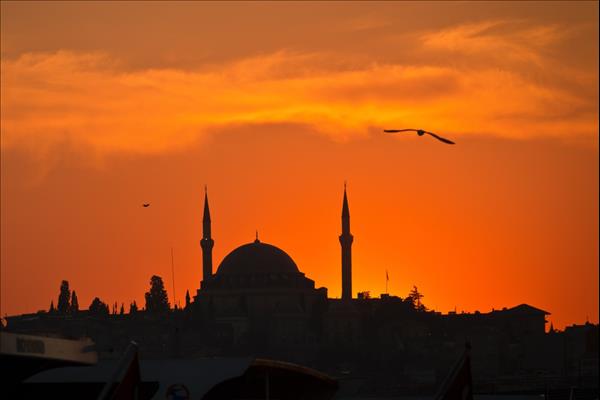(MENAFN- The Peninsula)
#ramadan khalid elsawi |
The Peninsula Online
Doha: Ramadan is a test of faith for many Muslims around the world.
It is an obligatory custom that all Muslim men and women must observe upon reaching the age of maturity. During Ramadan, people appreciate the things they have while also receiving a little taste of what less fortunate people have to go through.
The world's Muslim population exceeds one billion, with people belonging to the Islamic faith strewn around different parts of the world.
Given this distribution of people and the uniqueness of every country's situation, there are many Muslims whose faith is tested in much more extreme ways than others.
Below are some unique Ramadan experiences from across the globe:
Iceland Muslims fast the longest
Iceland has a peculiar timing. With over 17 hours of daylight per day experienced for most of the year, the small Muslim population in Iceland (shy over 400 according to Statista) has to endure a much longer fasting period. In 2018, CNBC reported that Muslims in Iceland are expected to fast for over 21 hours.
Due to Iceland's proximity to the global north pole, time itself becomes a strange phenomenon. Sometimes the sun does not set in Iceland for days, and sometimes the sun only shows for 4 to 5 hours a day.
To offer a solution for this, Islamic scholars advise Muslims living in these areas to fast according to either the nearest country with no continuous daylight, the nearest Muslim majority country, or just follow Saudi Arabia's timing.
The director of the Islamic Foundation of Iceland reported to CNBC however that the Muslim community in the country, and himself, elect to go 21 hours without food and water.
“Some people cannot accept that they'll be eating when the sun is up, even if it's near midnight, because they are used to waiting in their home country - so they will go by local time. Others can accept that they'll have to eat even when the sun is partially up.”
People in Kuwait fast under 50 degrees temperature
The test of fasting in Ramadan is as much physical as it is spiritual. The scorching sun hanging above people's heads while they have to abstain from water for over 12 hours makes fasting that much of a difficult feat.
In Kuwait, the temperature often reaches 50 degrees Celsius, with the Mitribah area in Kuwait having recorded the hottest temperature in 2016 at 54 degrees Celsius.
Though Mitribah is not a residential area, Kuwait remains a very hot place, and according to The New Arab, the heat has caused many fires in the past due to people having to keep the air conditioning on even when they are not at home.
The New Arab also quoted the Undersecretary of the Ministry of Electricity and Water and Renewable Energy saying that the high temperatures have caused a great overload on electric generators, which caused several power outages in many places around the country, adding to the suffering of people fasting there.
The government in Kuwait has often warned its citizens from being outside during the morning time in Ramadan to avoid health complications related to being exposed to scorching heat while simultaneously fasting.
People in Yemen fast through a hunger crisis
Fasting in Ramadan lasts from the first Fajr azan until the Maghrib azan, and people are then able to enjoy food until the first azan again in a 30-day cycle.
Fasting could be tiresome and bothersome, but eventually, people get to break their fast and enjoy sustenance.
However, for some people in Yemen, the country most affected by hunger and malnutrition according to the Global Hunger Index 2022, sometimes the food never comes, and oftentimes the food is never enough.
"Today is the first day of Ramadan, I have only a little flour and one egg to feed my family,” said Afrah, a 34-year-old Yemeni mother who said all she can afford to feed her children was bread and water.
Yemen, a war-torn country, suffers from an acute food crisis that haunts half of its population according to WFP.
The country has a population of just over 30 million individuals. The WFP reports that 17 million of those in Yemen suffer from food insecurity, while 23.4 million are in need of humanitarian assistance.
UN agencies also report that about 19 million people - six out of ten people – face acute food insecurity in Yemen, and over 3 million people suffer“acute” malnutrition.
"We fast every day of the year now. There is no difference between the month of Ramadan and other months," Afrah says, revealing she spends her days scouring for garbage like discarded boxes and papers, and plastics that she may use to keep the fire alive to prepare food for her family.
2030 Ramadan is projected to come twice in one year
In 2030, Muslims all over the world are projected to observe Ramadan at the beginning of the month of January. During that same year, Muslims will also observe a second Ramadan projected around December 26 of the same year.
This phenomenon, in which Ramadan occurs two times in one single year happens every 30 to 33 years according to Muslim scholars, with the last one having been observed during the year 1997.
According to Saudi astronomer Dr. Khaled Alzaaq, fasting two Ramadans in one single calendar year happens only in the Gregorian calendar and not the Hijri Islamic calendar.
Read Also why does ramadan come at a different date every year?
Dr. Alzaaq notes that, for the year 1451H (Hijri), Ramadan is projected to start on January 5, 2030. While for the year 1452H, Ramadan is expected to start on December 26, 2030.




















Comments
No comment